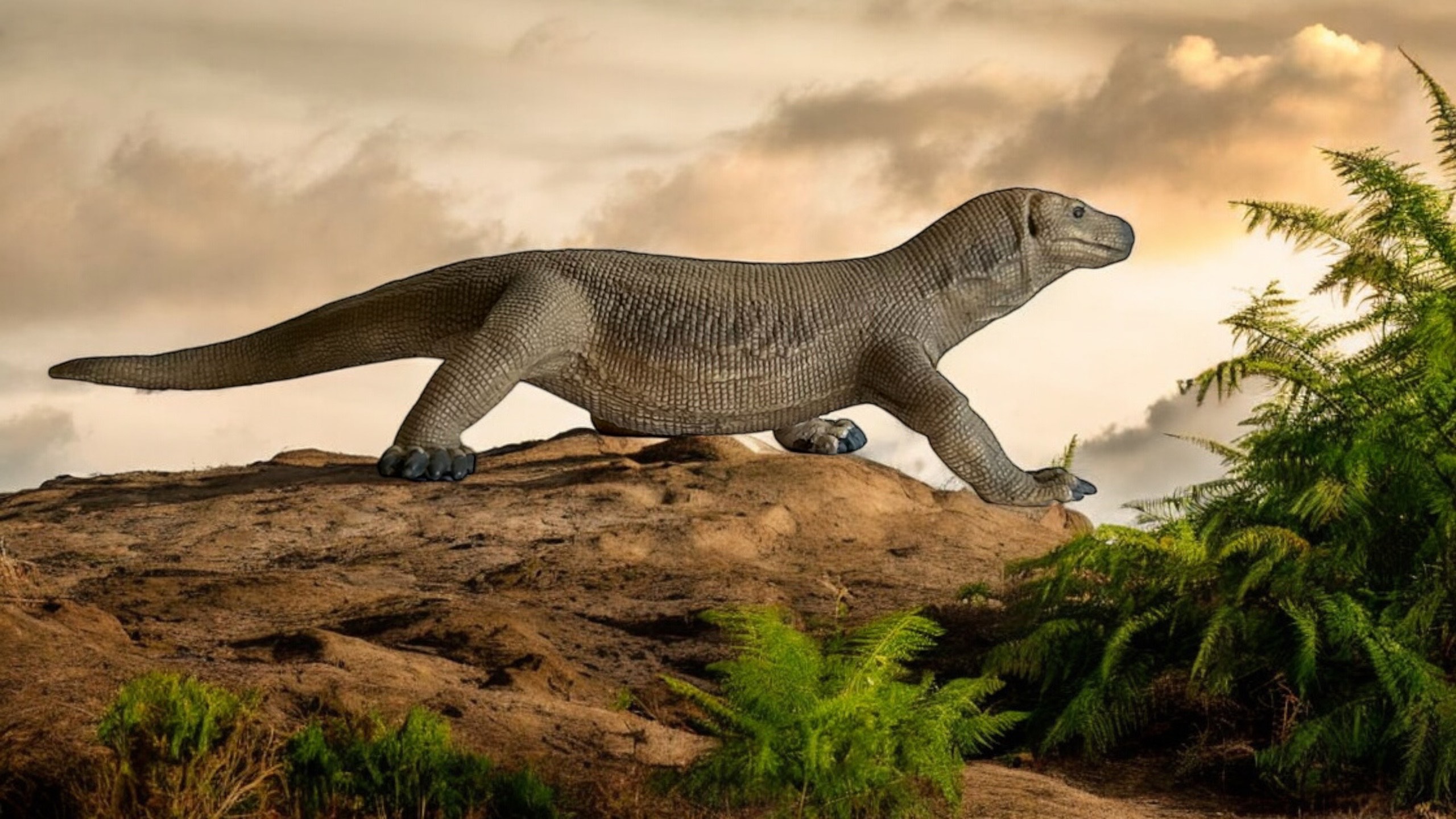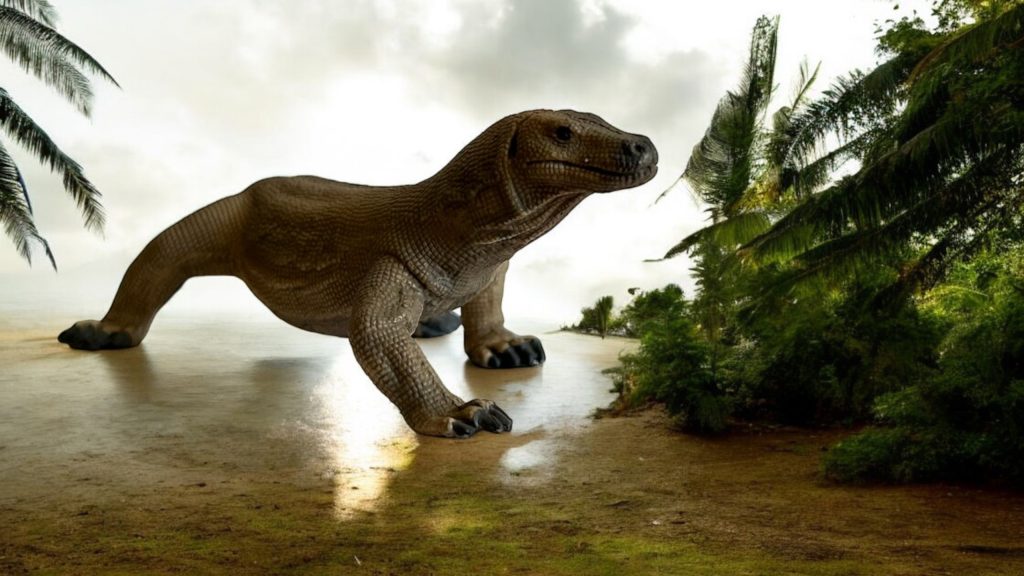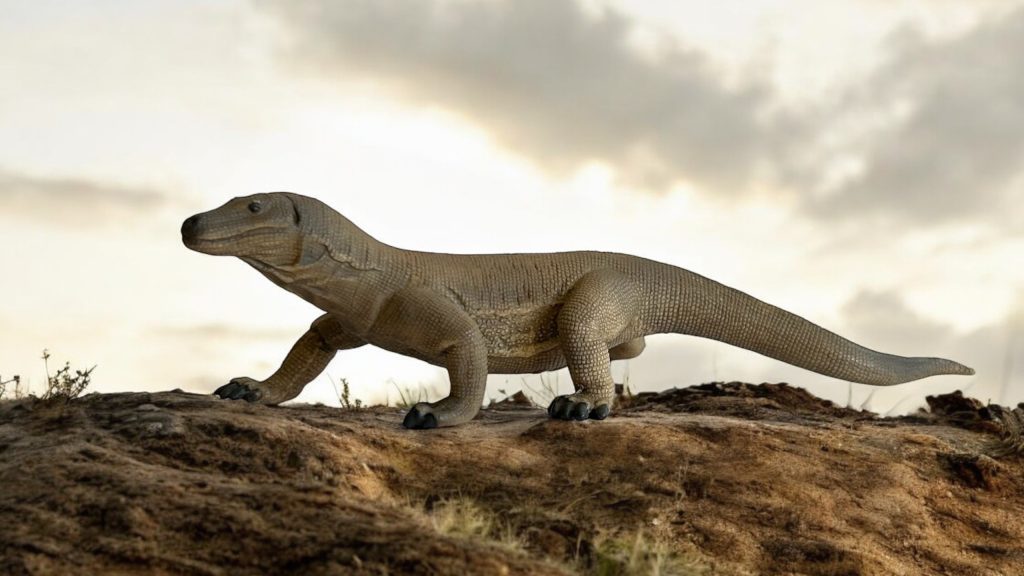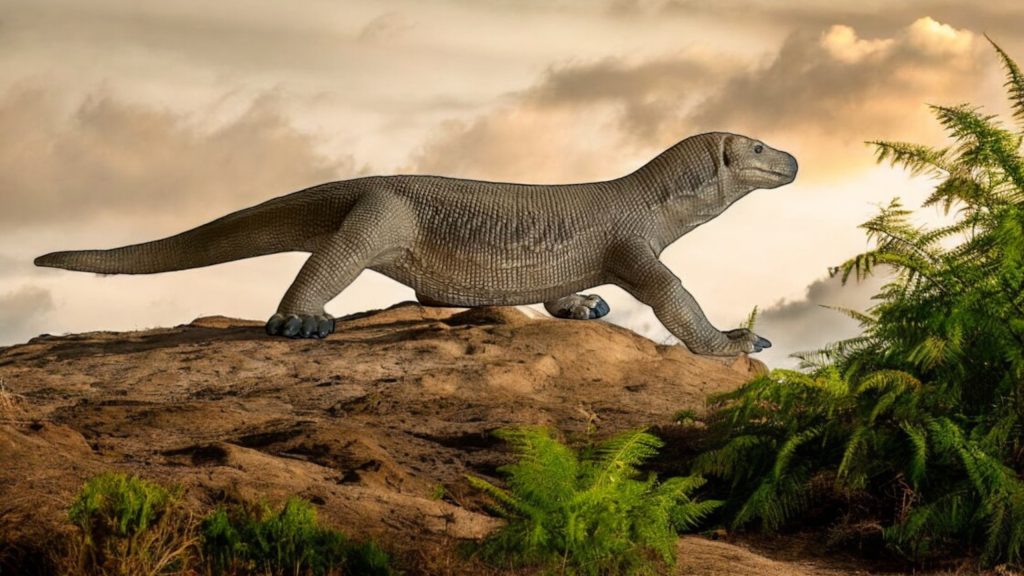Megalania: The Apex Predator of the Pleistocene
 Komodo Dragon by Schleich.
Komodo Dragon by Schleich.Among prehistoric predators, few were as formidable as Megalania (Varanus priscus). This gigantic lizard ruled Australia’s ecosystems during the Pleistocene, earning the title of the largest terrestrial lizard known to science.
With its colossal size and potentially venomous bite, Megalania was the apex predator of its environment, preying on Australia’s unique megafauna before vanishing 50,000 years ago. In this article, we will explore its history, characteristics, extinction mystery, and the surprising lack of realistic figures representing this incredible reptile.
What is Megalania? The Giant Lizard of Prehistory
Megalania was a giant varanid, closely related to the Komodo dragon (Varanus komodoensis), but far larger. It was the largest land predator in prehistoric Australia, a continent where placental mammals were scarce, and reptiles played a dominant role in the food chain.
This massive lizard could take down enormous prey and had no natural predators of its own.

Discovery and Key Characteristics
The first fossil remains of Megalania were discovered in 1859 by British paleontologist Sir Richard Owen, who named it Megalania prisca, meaning «great ancient wanderer» in Greek. Since then, fossils have been found across Australia, confirming that this reptile occupied vast territories.
📌 Key Facts About Megalania:
- Scientific Name: Varanus priscus
- Period: Pleistocene (1.6 million – 50,000 years ago)
- Distribution: Australia
- Length: Up to 8 meters
- Height: Between 80 cm and 1 meter
- Weight: Between 1,600 and 1,940 kg
- Diet: Carnivorous, apex predator of its ecosystem
These dimensions make it the largest terrestrial lizard ever recorded, far surpassing the Komodo dragon in both length and mass.
Megalania’s Habitat: Ruling Australia’s Megafauna
During the Pleistocene, Australia had an ecosystem very different from today. Megalania inhabited savannas, open forests, and arid regions, where it coexisted with enormous creatures like Diprotodons (giant marsupials), Trogonotheres (wombat-like giants), and Genyornis, a large flightless bird similar to an ostrich.
This environment, lacking large mammalian carnivores, allowed Megalania to become the top land predator with no real competitors.

Megalania: A Deadly Predator
Research suggests that Megalania hunted similarly to the Komodo dragon, using its strength, sharp teeth, and possibly venom glands to subdue its prey.
Hunting Strategies:
- Ambush Attacks: Its size allowed it to ambush prey and bring them down with a single bite.
- Venomous Bite: Some studies suggest it had venom glands that could cause shock and excessive bleeding, weakening its victims.
- Lethal Jaws: Its serrated teeth could tear through flesh with ease, making recovery from its bite nearly impossible.
Megalania’s prey likely included giant marsupials, large terrestrial turtles, and flightless birds, confirming its role as the apex predator of its time.
Extinction of Megalania: What Led to Its Disappearance?
Megalania vanished around 50,000 years ago, and its extinction remains a mystery. However, two main theories explain its disappearance:
1️⃣ Climate Change: As the Ice Age ended, Australia’s environment became drier, reducing the availability of large prey.
2️⃣ Human Impact: The arrival of the first Aboriginal Australians coincided with Megalania’s extinction. Hunting and ecosystem disruptions may have led to its decline.

The Absence of Megalania in Collectible Figures
Despite its impressive size and status as an apex predator, Megalania has received very few realistic representations in collectible figures. While its popularity has grown in recent years due to appearances in video games and documentaries, major prehistoric figure brands have yet to release an accurate model of this reptile.
Why Are There No Megalania Figures?
- Despite its rising popularity, companies don’t see it as iconic as predators like T. rex or Smilodon.
- Its similarity to the Komodo dragon might make manufacturers overlook it.
- The lack of complete fossil remains makes reconstructing its exact appearance challenging.
Options for Collectors:
🔹 3D Printing and Custom Figures: Many artists have started creating their own Megalania models using 3D printing and sculpting.
🔹 Hope for Major Brands: Companies like PNSO, known for their scientifically accurate prehistoric figures, could one day release a high-quality Megalania.
A well-made Megalania figure with realistic sculpting and accurate coloration would be a must-have for any prehistoric collection.
Fun Facts About Megalania
- Was it the largest lizard in history? Yes, on land. Only some mosasaurs (marine reptiles) were bigger.
- Could it still exist today? There’s no scientific evidence, but Australian legends tell of giant lizards hidden in the outback.
- Has it appeared in movies or games? Yes, it has been featured in games like ARK: Survival Evolved and in various documentaries on megafauna.
Conclusion: Megalania’s Legacy in Prehistory
Megalania was the largest land lizard in history, an apex predator that ruled Australia during the Pleistocene. Its combination of size, strength, and possible venom made it one of the most formidable hunters of its time.
Despite its significance, it remains underrepresented in collectible figures, leaving hope that brands like PNSO will one day bring this prehistoric giant to life in a highly detailed model.
Megalania’s legacy continues in popular culture and paleontology, reminding us that prehistoric dominance wasn’t limited to mammals—reptiles also ruled the land.





